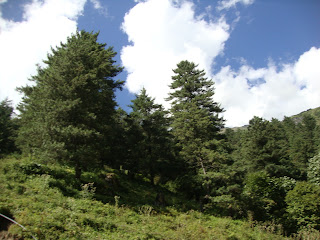Acacia catechu also commonly called Mimosa
catechu, is a deciduous, thorny tree which grows up to 15 m (50 ft) in height.
Middle-sized tree; twigs with paired
recurved thorns; flower pale yellow in cylindrical spikes; pod flattened,
brown, shining, 5-7 cm long, containing 6-8 seeds. A useful multipurpose tree
for the Terai and lower hills, fairly easy to establish and of considerable
commercial importance as the source of katha and cutch.
Local Name
|
:
|
Khair (Nepali), Khayer (Tharu)
|
English Name
|
:
|
Cutch Tree
|
Family
|
:
|
Leguminosae
|
Scientific Name
|
:
|
Acacia catechu, Mimosa catechu
|
Habit
|
:
|
Spiny tree
|
Flowering Period
|
:
|
May to July
|
Fruiting Period
|
:
|
October to December
|
Habitat
|
:
|
Trripical zone in revarine forest
|
Occurrence in
Nepal
|
:
|
Terai and lower hills
|
Use
|
:
|
Dye, medicine, firewood
|









